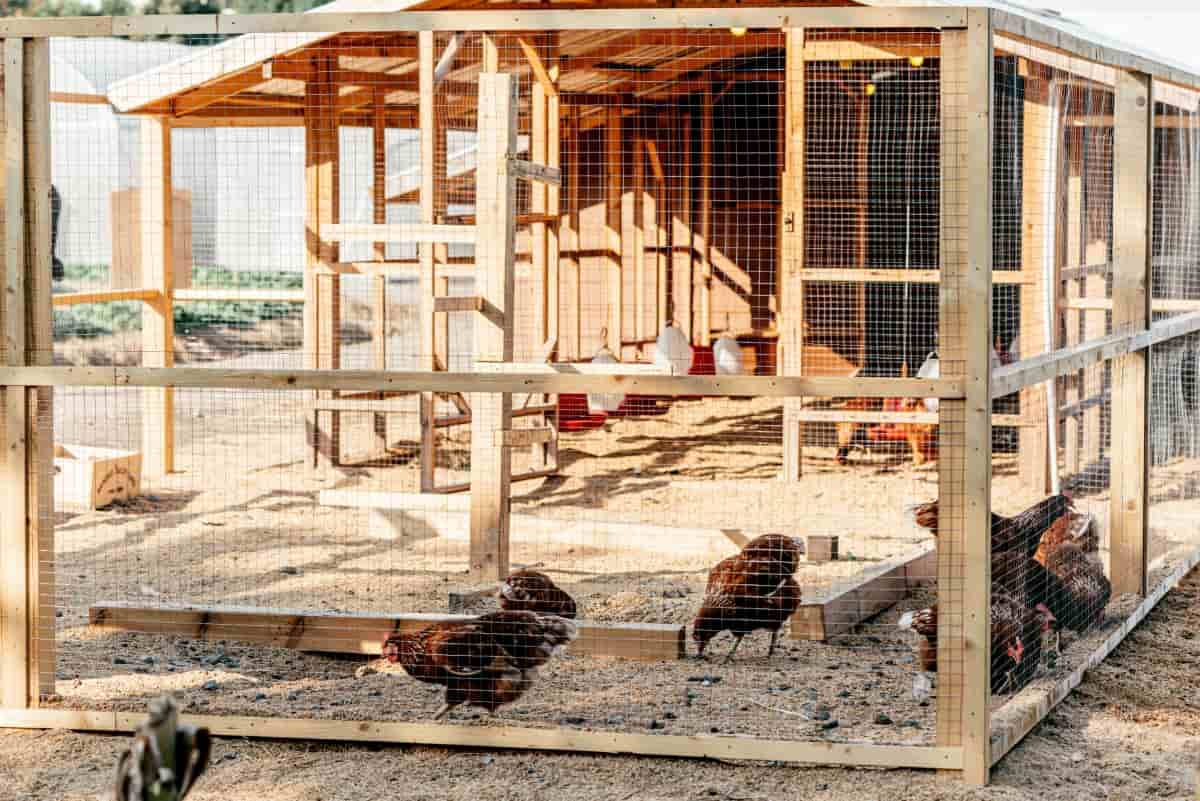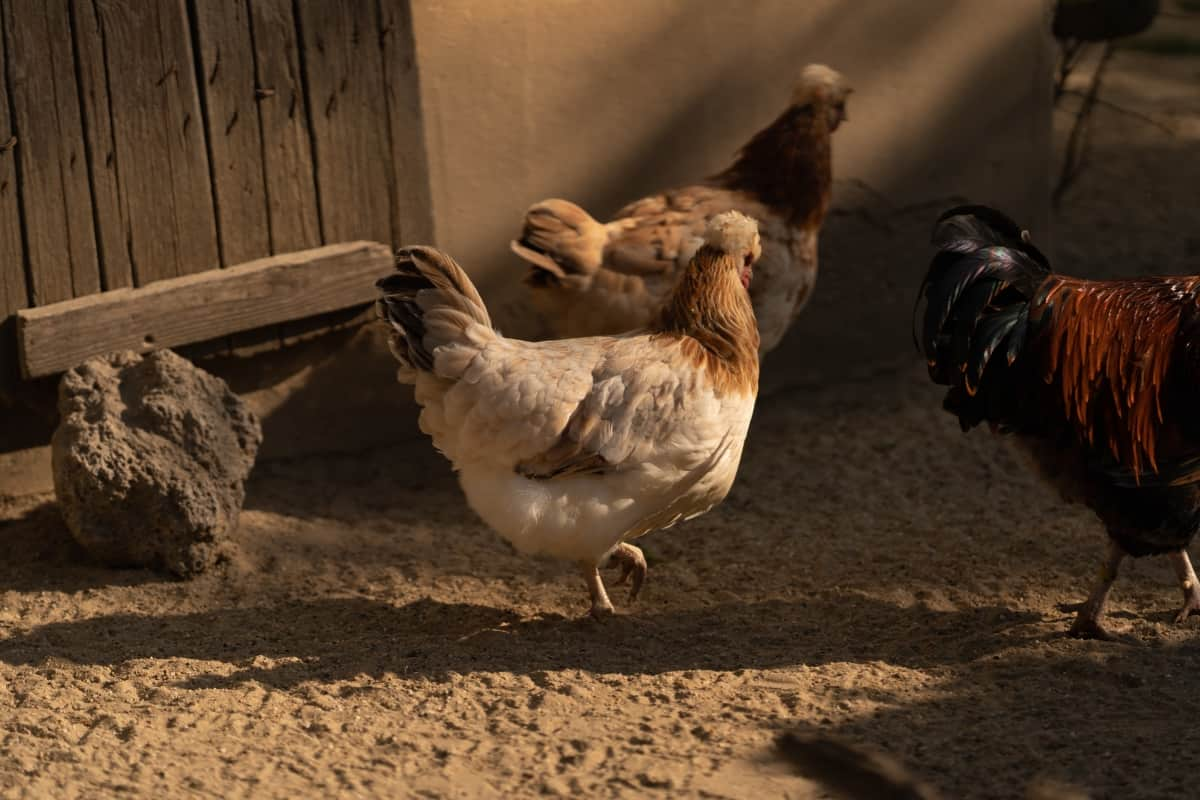Understanding what causes the mud is the first step towards finding the right solutions. A muddy chicken coop is usually caused by poor drainage and water accumulation, turning the once-dry ground into a sticky quagmire that no chicken wants to navigate. Managing a muddy chicken run is crucial for your flock’s health and well-being.

How to Fix a Muddy Run Chicken Coop
Overview of Managing a Muddy Chicken Run
Understanding the Causes of Mud
Mud in a chicken run can be caused by various factors such as poor drainage, heavy rainfall, compacted soil, or even overpopulated areas where chickens frequent. This excess moisture not only creates an unpleasant environment but also poses health risks to your flock. By identifying the reasons for mud accumulation in chicken coops, you can tailor specific strategies to address them effectively. There are ways to combat muddy conditions and create a more comfortable space for your chickens to roam freely.
The Importance of Addressing Mud Issues
Managing mud issues in your chicken run is crucial for the health and well-being of your feathered friends. Mud can lead to various problems, such as bacterial infections, foot injuries, and overall discomfort for your chickens. By addressing mud issues promptly, you can create a cleaner and healthier environment for your flock. Additionally, managing mud effectively can save you time and effort in cleaning and maintenance tasks.
Assessing Your Chicken Run’s Drainage
Identifying Drainage Problems
Identify any existing drainage issues by observing how water flows in and around the area. Look for areas where water tends to pool or accumulate, indicating poor drainage. By addressing these drainage problems promptly, you can significantly reduce muddy conditions in your chicken run.
Solutions for Improving Drainage
Solutions can include creating gentle slopes to redirect water away from the coop and ensuring that rainwater drains away naturally. Installing a French drain system or adding gravel beds can also help prevent excess moisture build-up. Regularly inspecting and maintaining proper drainage will help keep your chickens healthy all year round.
Choosing the Right Ground Cover
Benefits of Various Ground Cover Options
Straw is a popular choice as it provides insulation and cushioning for your chickens’ feet. Wood shavings are another good option, offering absorbency and odor control. Pine needles can be a natural alternative, providing a soft bed for your flock while also acting as a deterrent for pests like mites. Sand is great for drainage but may not offer much cushioning. Gravel is durable and easy to clean but might not be as comfortable for your chickens. The best ground cover will depend on your specific needs and preferences.
How to Apply Ground Covers Effectively
Firstly, choose the right type of ground cover that suits your specific needs – whether it’s straw, wood chips, or sand. Ensure that the ground cover is spread evenly across the entire area to provide maximum coverage and protection against mud. Consider using different types of ground covers for optimal results. Monitor the condition of your ground cover regularly and make adjustments as needed to ensure that it continues to combat mud build-up in your chicken coop effectively.
In case you missed it: Sand Bedding for Chickens: Ultimate Guide to Using Sand in Your Chicken Coop

Implementing Drainage Solutions
Creating Ditches and Slopes for Water Runoff
By creating ditches and slopes for water runoff, you can prevent water from pooling in your chicken run area. Properly designed ditches can help channel rainwater away from the coop, keeping the ground dry and mud-free. Sloping the land away from the coop also assists in directing water flow toward suitable drainage outlets.
Installing French Drains or Gravel Beds
French drains are underground pipes filled with gravel that help redirect water away from the coop and run, preventing muddy conditions. Gravel beds are another effective solution for improving drainage. By laying down a layer of gravel in strategic areas, excess water can be absorbed and filtered, keeping the ground drier for your chickens to roam comfortably.
Landscaping to Prevent Water Accumulation
Planting Vegetation to Absorb Excess Water
Planting vegetation strategically can help absorb excess water and improve the overall drainage in your coop area. Select plants that grow in moist conditions and have robust root systems to soak up water efficiently. Options like vetiver grass, willows, or sedges are excellent choices for absorbing excess moisture while adding a natural aesthetic to your chicken run.
Using Barriers to Redirect Water Flow
By strategically placing barriers such as rocks or landscaping timbers, you can guide water away from the coop and run area. This simple solution helps prevent water accumulation and subsequent mud issues. Barriers act as natural diverts, guiding rainwater elsewhere instead of letting it pool around the coop. These barriers not only help in managing mud but also aid in maintaining a cleaner and healthier environment for your flock.
Routine Maintenance to Prevent Muddiness
Regular Cleaning and Ground Cover Replacement
Maintaining a clean and mud-free chicken coop is essential for the health and happiness of your flock. Regular cleaning is key to preventing muddiness in the run area. By removing droppings, wet bedding, and debris, you can keep the ground dry and reduce the chances of mud forming. In addition to cleaning, replacing the ground cover regularly can also help in controlling muddiness in chicken coop.
Monitoring and Managing Water Sources
Regularly inspecting the area for any signs of pooling or excessive moisture is key. By identifying problem areas early on, you can take proactive measures to address them promptly. Additionally, check for any leaks or overspills from watering systems that could be contributing to the muddiness of the environment. If you have natural water sources nearby, like streams or ponds, monitor their levels during heavy rainfall periods.
Utilizing Bedding Materials for Mud Control
Types of Bedding Suitable for Wet Conditions
For keeping your chicken coop mud-free, utilize the right bedding materials. Opt for absorbent options like straw, wood shavings, or hemp bedding that can help soak up excess moisture and prevent muddy conditions. Avoid using materials like hay or grass clippings that tend to retain water and contribute to muddiness.
Strategies for Bedding Application and Maintenance
Spread a generous layer of bedding on the floor of the coop to create a dry and comfortable environment for your feathered friends. Regularly inspect the bedding for dampness or mold and replace it as needed to maintain cleanliness. Consider adding diatomaceous earth to your bedding mix as a natural way to control odors and pests while keeping things dry. This powdery substance is safe for chickens but effective at absorbing excess moisture.
Constructing Walkways and Platforms
Building Elevated Paths for Chickens
By building elevated paths for your chickens, you not only provide them with a dry and clean area to roam but also help keep the rest of the coop tidy. Elevated walkways allow your chickens to move around without trampling on wet ground, reducing the chances of muddy messes in their living space. Building platforms at various levels adds an element of interest for your feathered friends while offering them additional spaces for perching or resting.
Materials and Construction Tips for Durability
Selecting the right coop materials can make a difference in how well they hold up over time. Opt for sturdy options like pressure-treated wood or composite decking that your feathered friends constantly use. Ensure proper construction by using quality screws and fasteners to secure the components together securely.
In case you missed it: Pros and Cons of Having a Rooster in a Flock and Coop

Adapting Feeding and Watering Locations
Strategic Placement to Minimize Water Spillage
Consider placing feeders and waterers on elevated platforms or using raised stands to keep them off the ground. Another tip is to place feeding and watering stations away from high-traffic areas where chickens tend to congregate frequently. Additionally, using drip trays or shallow containers underneath feeders and waterers can help catch any spills or leaks before they have a chance to seep into the ground. This simple solution can go a long way in maintaining a drier environment within your chicken coop setup.
Best Practices for Feed and Water Station Design
When designing feed and water stations for your chickens, consider functionality and accessibility. Opt for elevated platforms to prevent mud contamination in the chicken coop and make it easier for the birds to reach their food and water. Choose materials that are easy to clean and sanitize regularly, such as stainless steel or durable plastic. Regularly check and refill the containers, keeping them at a suitable height for easy access by all chickens.
In case you missed it: Chicken Coop to Living Room: Discover the 10 Best Chicken Breeds for Indoors

Conclusion
Keeping your chicken coop and run free from mud is essential for the health and well-being of your flock. By implementing proper drainage solutions, routine maintenance practices, utilizing suitable bedding materials, adapting feeding and watering locations, as well as choosing the right ground cover options, you can effectively fix a muddy chicken coop.
- Feed Your Flock for Less: Top 10 Tips to Save on Chicken Feed
- Ultimate Guide to Ossabaw Island Hog: Breeding, Raising, Diet, and Care
- Hatching Answers: The Top 10 Reasons Your Chickens Aren’t Laying Eggs
- Eggs and Economics: Breaking Down the Cost of Raising Backyard Chickens
- Defend Your Greens: Proven Methods to Keep Iguanas Out of Your Garden
- Ultimate Guide to Cinnamon Queen Chicken: A Comprehensive Guide for Beginners
- Ultimate Guide to California Tan Chicken: Breeding, Raising, Diet, Egg-Production and Care
- Ultimate Guide to Marsh Daisy Chicken: Breeding, Raising, Diet, and Care
- 10 Types of Chicken Farming Businesses You Can Start for Profits